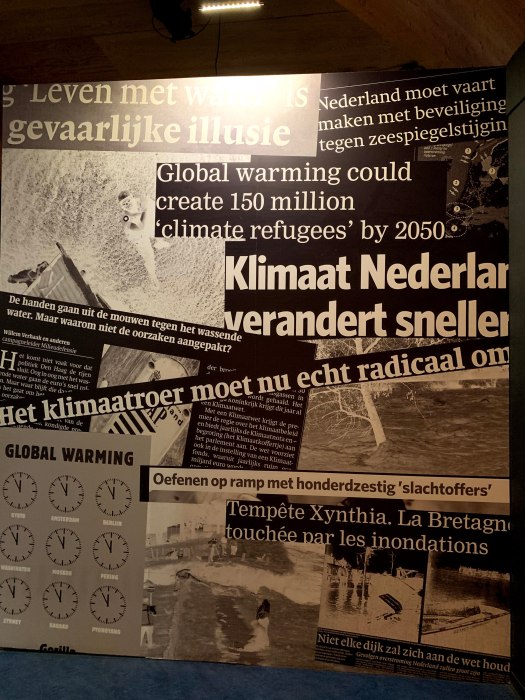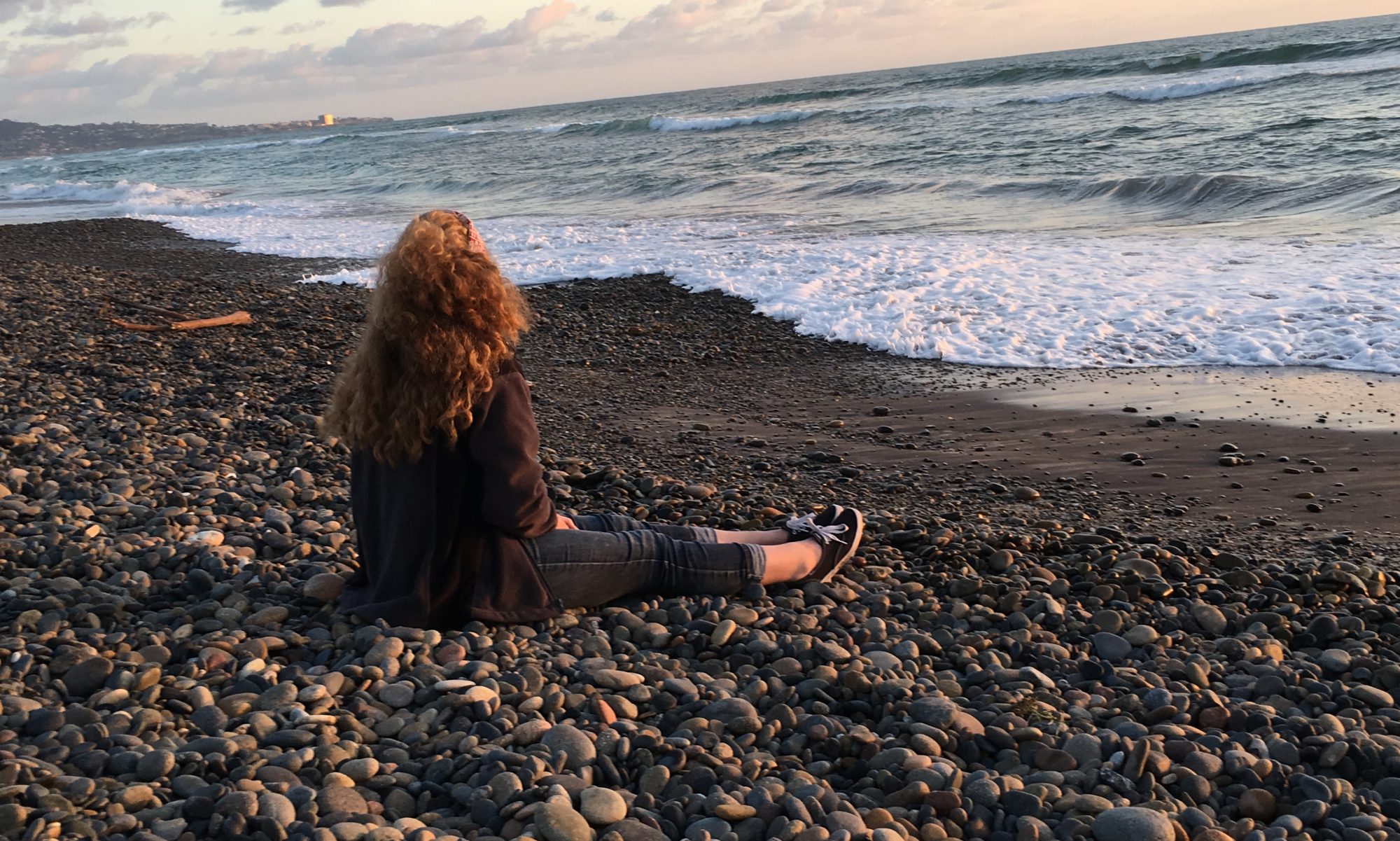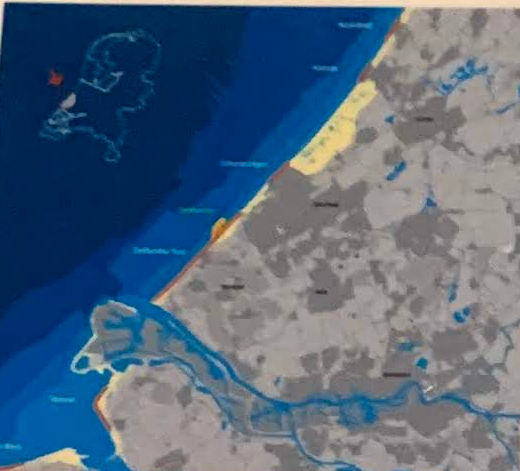March 1st, 2020
Today was the day I was setting out to see the giant storm surge barrier that I had learned about in my climate change/sea level rise based course a few months ago!
I had traveled to Rotterdam the day before on the train, it only took about two hours to get there from Amsterdam and then I settled into a new hotel – I chose to book one for five nights because I needed a rest to stay in one place for more than two nights. I chilled out for most of that evening and then went to watch the INCREDIBLE Watford vs. Liverpool match at a local sports bar. It was a great game for those who are not a fan of Liverpool!
I tried one of the impossible meat burgers (non-meat burger meant to look/taste like a normal meat burger) at this restaurant and it was soo good. Very comparable to a normal meat burger – yet at an expensive price. It was an expensive dinner for a recent college graduate on a budget in Europe but it was worth it for the experience of time watching that game and trying the impossible burger. 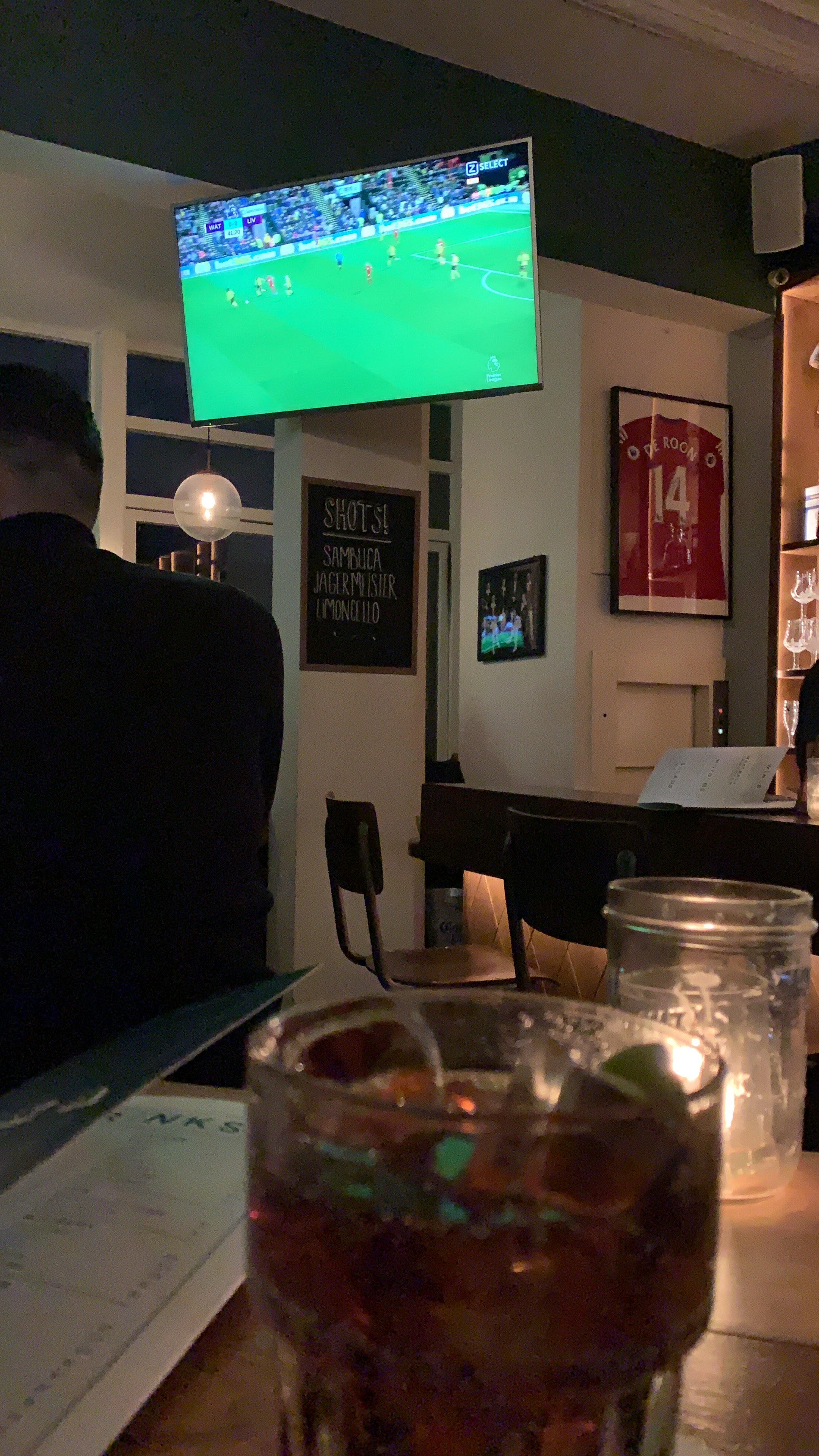
I traveled to the South of Holland majorly for the reason of visiting this storm surge barrier. The image below shows the South of Holland – “The Wetland Province”. You can see how the water moves through so much of the province and highlights the importance of infrastructure to work with water to ensure the future existence of this province.
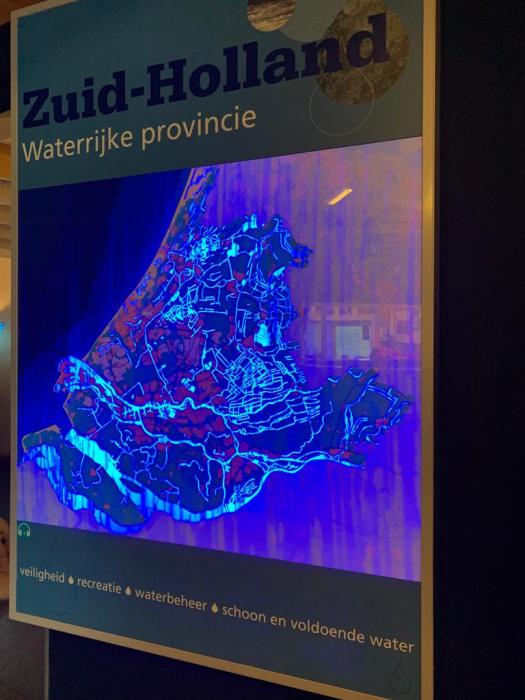
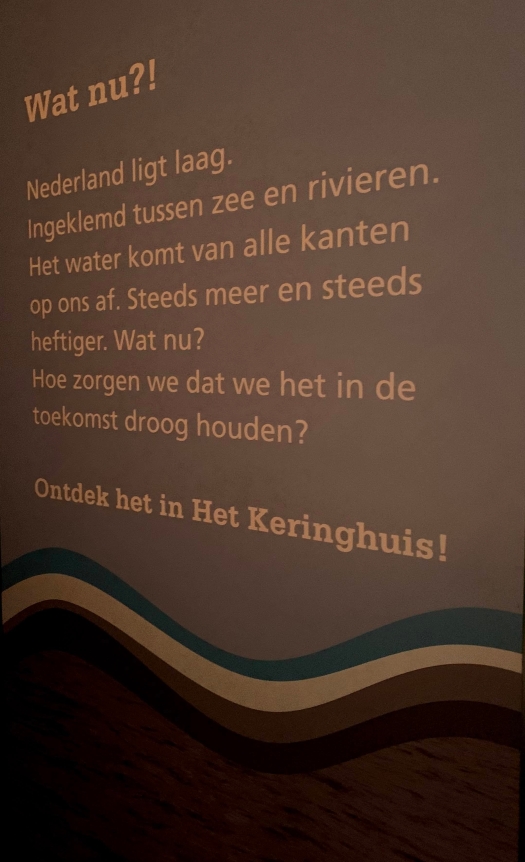
The Netherlands has engineered many dams, levees, barriers, and all the sort because many of their cities are at or way below sea level as shown in the graphic. The country also was called to action to solve their flooding problems after a catastrophic flood in 1953 that caused 1,856 deaths. This led the government to take action to protect the country from further such events. The first barrier that they built was actually incredibly far inland because that town, Nieuwerkerk aan den Ijssel, is surprisingly about seven meters below sea level.
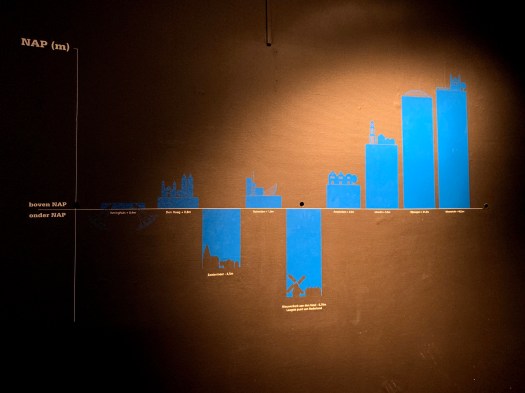
Here is a map showing The Delta Works. The Delta Works is an expansive interworking set of dams, dikes, surge barriers set up to protect the southwest part of the Netherlands.
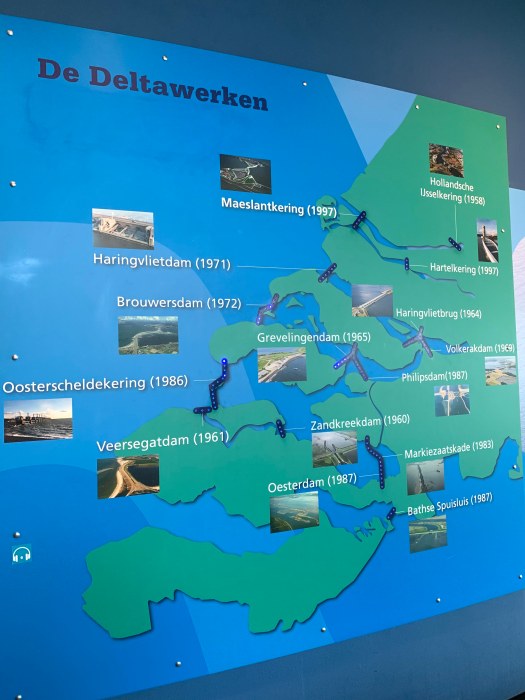
So today I visited one the most recently built barrier which is called Maeslantkering.
March 1st was a Sunday and I did not plan well or do enough research before heading out that morning for my 3pm Engish tour time. I took the metro train from Rotterdam to Hoek van Holland. My plan was to find a place close to the train stop to rent a bike once I got there but I was lost once I arrived as the close stop was in a suburban residential area. I had no bike before so I ended up walking an hour and a half to the storm surge barrier. I had plenty of time and had planned on spending time at the storm surge barrier and in the town around. Looking at Google Maps did not give me a clear idea of how in the middle of nowhere the barrier actually was. This meant that after I walked for an hour and a half to the site, I was just stuck there to hang out because there was nothing within a good 50-minute walking radius. I should have paid more attention to the area and done more research on the ways to get there before I left but it made for a good experience.
I was able to walk along these rows of wind turbines and agricultural lands. This was the closest I have ever been to a wind turbine and that was a fascinating experience because many people have dismissed the use of wind turbines due to the worry of noise. The noise that the wind turbines did make seemed to be reasonable for the process that was happening. It was just the noise of a very large fan moving through space.
As I walked along people were using the space for walking, running, biking, all sorts of recreational activities on that nice Sunday morning. This space near the train tracks and wind turbines is still useable for public recreational activities. The same can not necessarily be said for fossil fuel energy plants and the side of a highway.
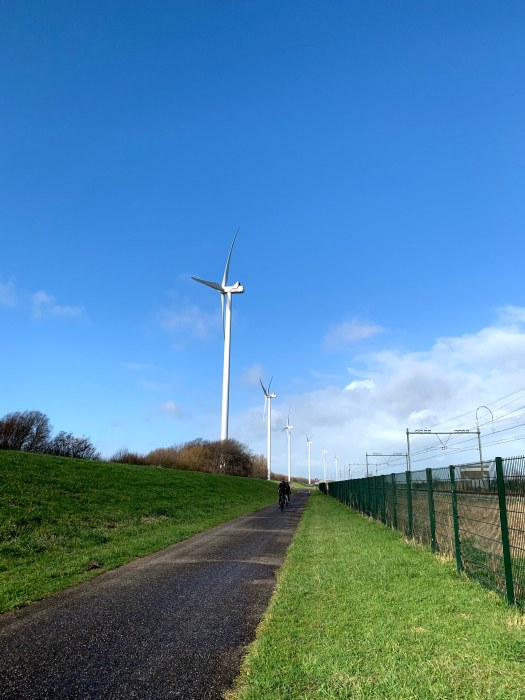
These images were taken within about 30 minutes of each other. There was a quick hail/rainstorm as I finished my walk to the barrier.
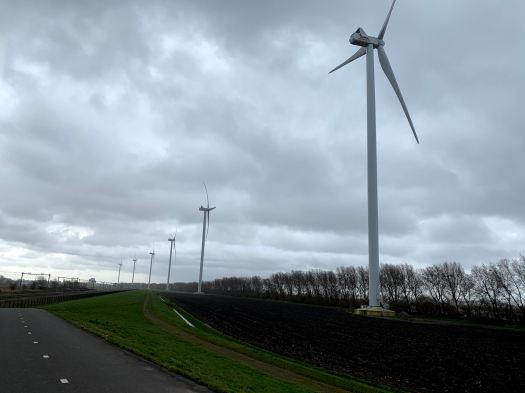
Maeslantkering
Maeslant storm surge barrier is the largest structure of moving parts anywhere in the world and was completed in 1997. The Netherlands made it a goal to create stormwater control measures to the level of engineering to protect from the 10,000-year storm (or an increase of five meters sea-level rise). Maeslantkering does protect from up to five meters of sea-level rise and has yet needed to be completely closed for any reason other than maintenance checks. It is only closed when there is a risk of a storm surge of three meters.
Quick Facts:
- Cost 450 million Euros (cheapest option
- 22 meters tall – the whole structure
- ~ 8 meters is always underwater
- 15,000 tones of steel for each arm
- 50,000 tons of concrete
- 36,000 tons of force from the water
- Base moves a bit after each storm
- Painted three layers of white to have a high albedo (reflect the heat back off the arms) – Important to keep the shape/reduce the expansion of the steel tubes made for the structure
- Each arm is “like the Eiffel tower on its side”
- It takes 8 hours of preparation time from the risk of high tide levels to close the arms
- It takes 2.5 hours to close the structure completely
- When closed, the arms close and fill with water, causing them to sink
- The ball hinges in the barrier weigh 680 tons each and have a diameter of 10 meters
- Below is an image of the diameter of the tube structure used
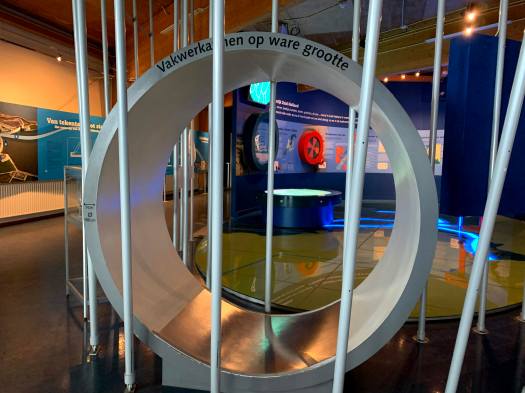
I took the English tour with another few stormwater enthusiasts. We walked around the arms and ball hinge structure along the very windy coast side.
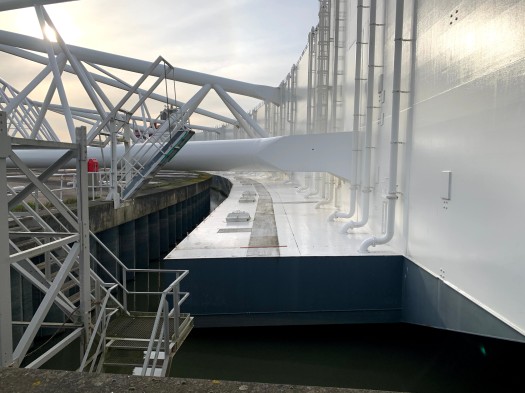
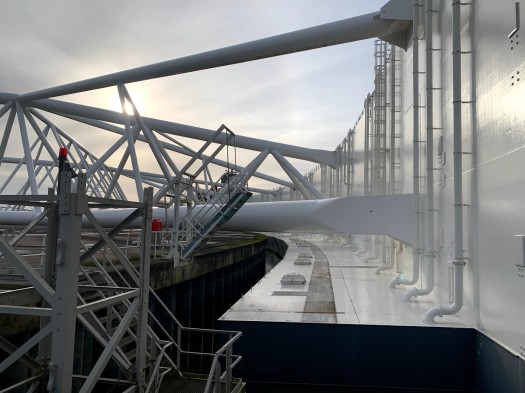
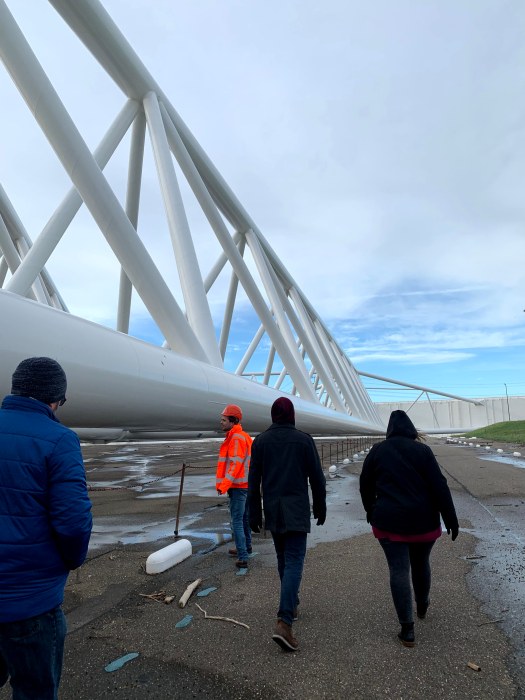
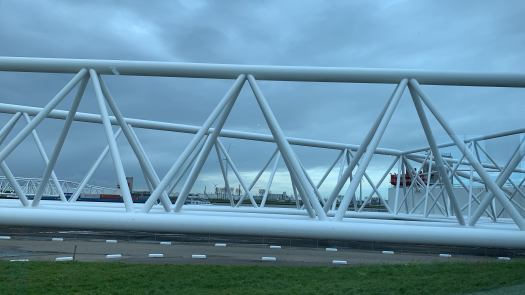
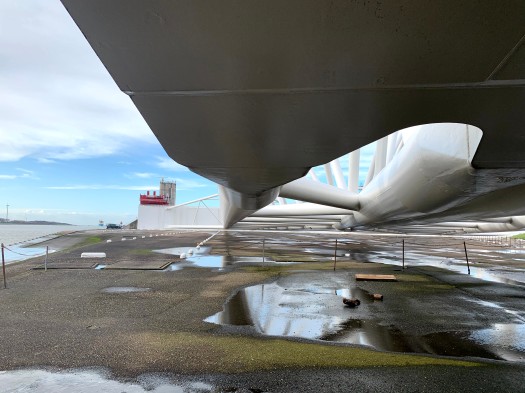
Here you can see a smaller model that is on display in the museum.
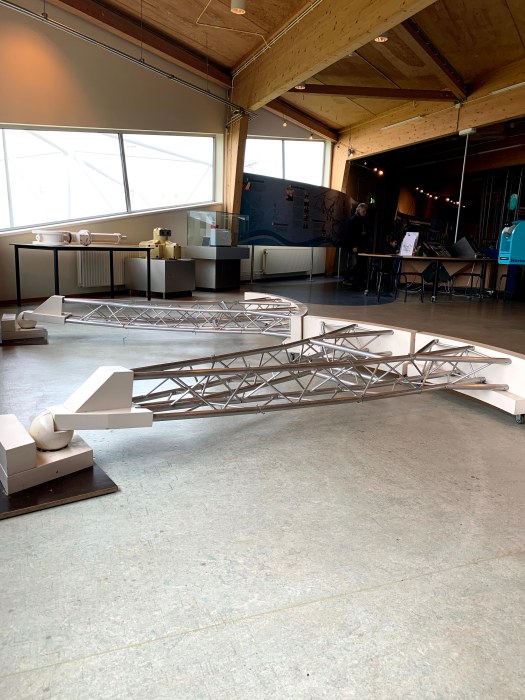
The structure was incredibly large. It was wild to walk alongside such a large piece of stormwater engineering.
Museum: Other Notes About Stormwater
Below are images I took at the museum located next to the storm surge barrier. I did my best to Google Translate the pictures so you can get an idea of what is going on.
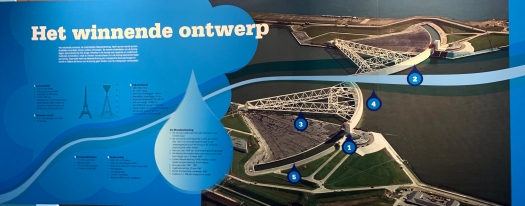
There were other options for designs but this winning design was the least expensive option that met the requirements for future flood protection.
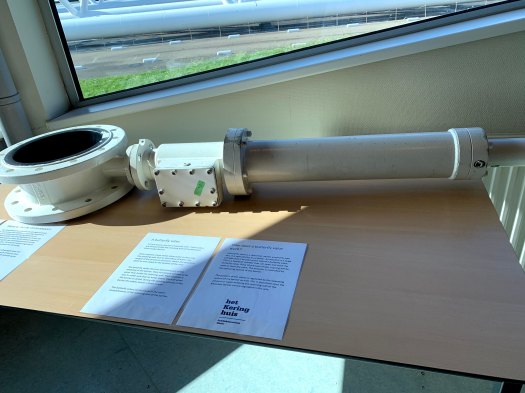
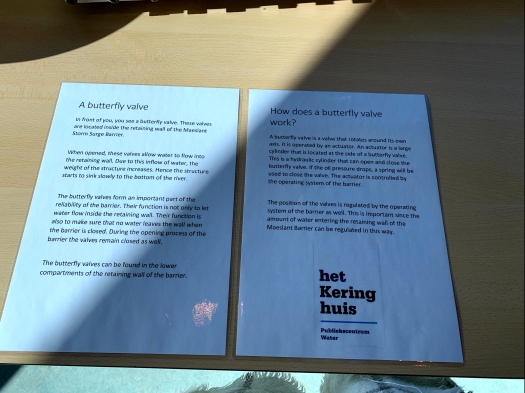
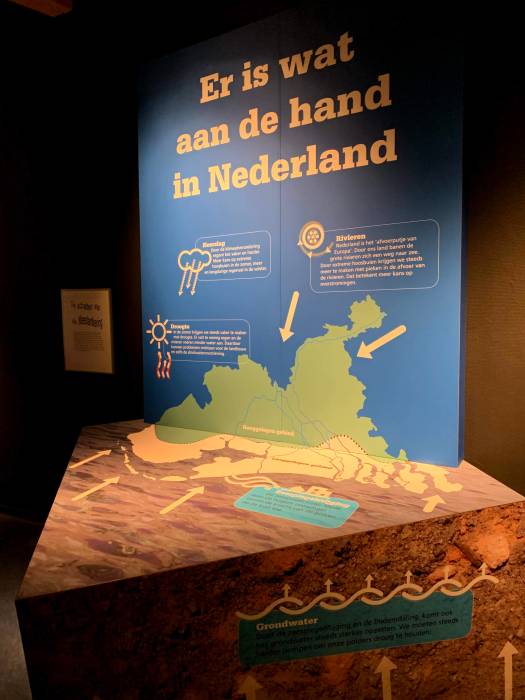
- Something is going on in the Netherlands
One of the best things about the Netherlands approach toward stormwater is its assurance to work with nature rather than against it. This image below shows how they are promoting that in further projects as well.
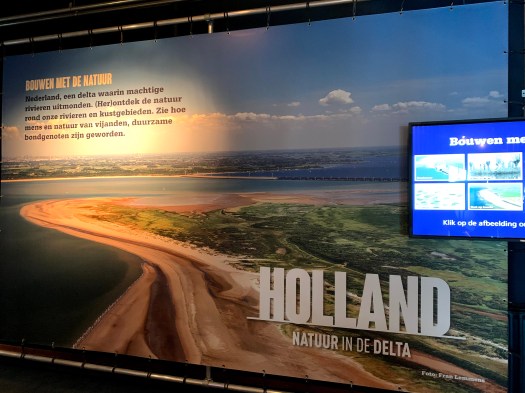
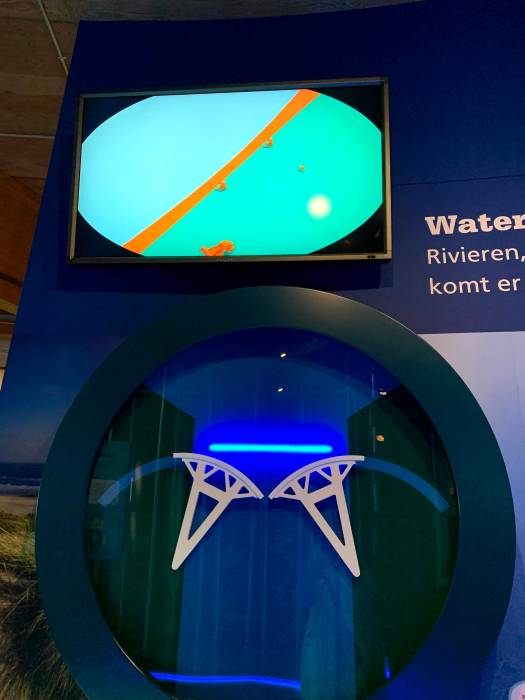
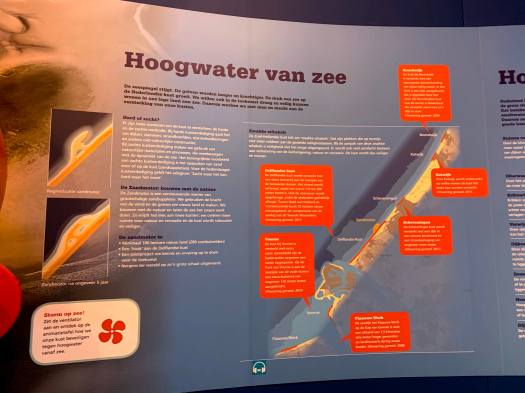
- High Water from the Sea – The sea level is rising. The waves become longer and more powerful. The pressure of the sea on the Dutch coast is growing. We also want to be able to live dry and safe in our low country by the sea in the future. That is why we are working hard to strengthen our coasts.
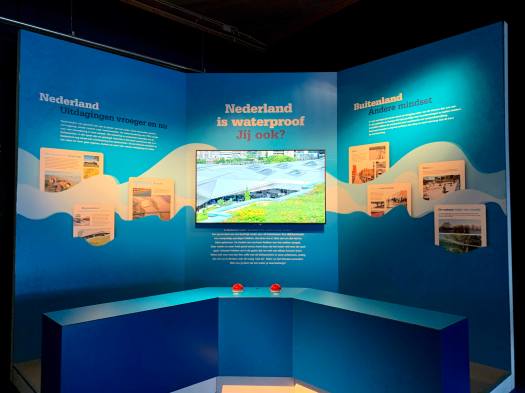
The Netherlands is waterproof – Are you?
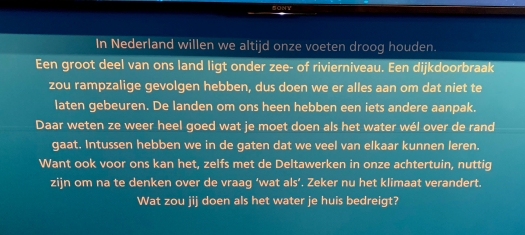
- In The Netherlands, we always want to keep our feet dry. A large part of our country is located at the sea or river level. A dike breach will have such disastrous consequences, so we are doing everything we can to prevent that from happening. The countries around us have a slightly different approach. There they know very well what to do if the water does go over the edge. In the meantime, we realize that we can learn a lot from each other. Because even with the Delta Works in our backyard, it can also be useful for us to think about the question ‘what if’. Especially now that the climate is changing. What would you do if the water threatens your home?
One of the more recent measures taken to work with nature for flood control is the “zand motor” – the Sand Motor. Below is the information is given from the museum about this new work. The project involved dredging up sand from the North Sea and creating a sand bar that works similarly to a natural barrier island.
Hoek van Holland: Sand Motor
After spending about five or six hours at this site, the nice master’s students who were working at the site drove me over to the beach that is at the lower end of the sand motor. I was so thankful because I had tried to go earlier but could not get a taxi and it was going to be an hour-long walk. They said they normally take public transportation to the same stop I got off at but then bike to work. Thankfully today one of the workers had borrowed the family car, or else I would have another hour and a half -long walk ahead back to the train stop where I started.
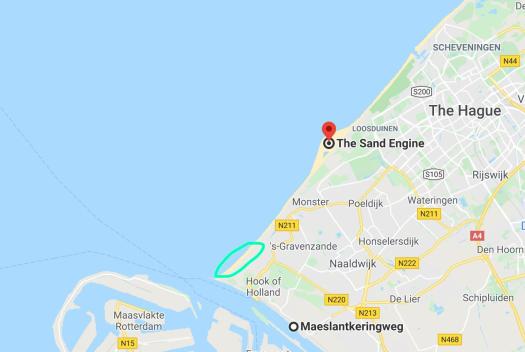
I was struggling to deal with the cold and wind as I walked along but I was able to get a good idea of how this small section of beach and area was used. There were houses in front of the protective sand dunes that seemed to be vacation rental housing. I was visiting in a clear off-season as dogs were running along the beach and most restaurants were closed.
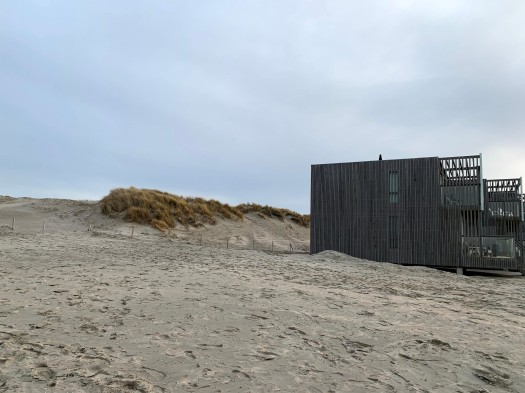
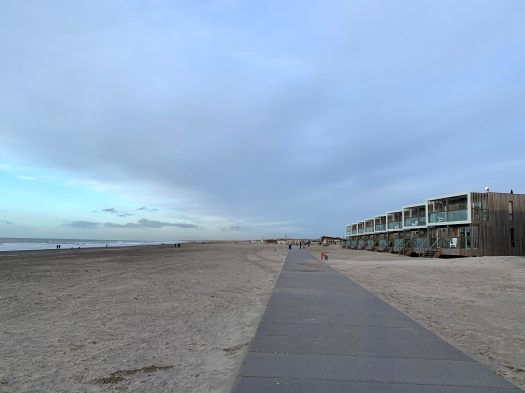
One of the disappointing things was the amount of plastic and material pollution along the beach. You can see in the image below in just a small section the amount of plastic fragmentation littered along the sand.
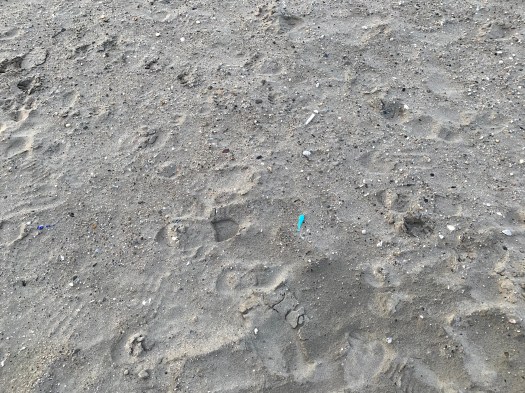
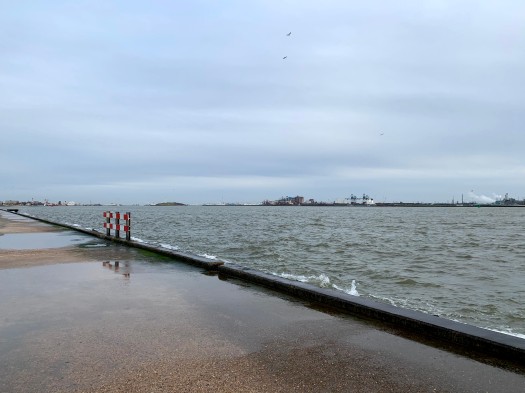
I only explored as far as the boardwalk before I could not take the wind any longer. It makes sense why there were so many wind turbines lining the waterway.
Takeaway:
Even if you do not live in a place as at risk for water problems as the Netherlands, there are many problems from climate change that can impact anyone. The artwork in the museum below was particularly interesting because of the headline I could understand — Global warming could create 150 million ‘climate refugees’ by 2050. The biggest takeaway from this work in the Netherlands is that we need to start working with nature. Working with nature allows for long term solutions as the projects, like the Sand Motor, can naturally adjust into the ecosystem over time. These nature-centric projects allow for customization of protection works for each individual city. This may take more design and engineering time, and may require more money upfront, but will allow for flexible, long-term solutions to our future climate change concerns.
